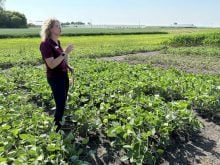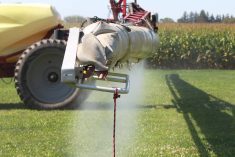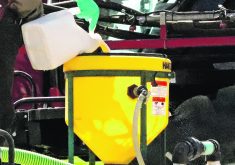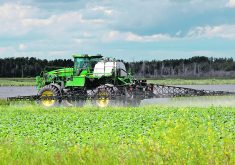The Canadian Food Inspection Agency has been testing samples of food and grain for residues of glyphosate since the spring of 2015.
However, when the agency releases its testing results, sometime in the next two months, the report will not contain detailed data on glyphosate residues in food.
“The report will not include raw data, company or brand names,” a CFIA spokesperson said in an email.
“The 2015-16 glyphosate testing report will include the number of samples and compliance rate for various food types … based on Canadian maximum residue limits.”
Read Also

Phosphate prices to remain high
Phosphate prices are expected to remain elevated, according to Mosaic’s president.
The CFIA has tested a long list of food and grains for glyphosate, including juice, grain, grain products, beans, peas and lentils.
The CFIA spokesperson said the agency is not publishing certain details for confidentiality reasons.
“Information about individual companies and products are not included in the reports because the relationships between distributors and manufacturers of specific products may be confidential business information.”
The CFIA study on glyphosate residues comes at a controversial time for the herbicide.
Last year the European Union came close to banning it because of a scientific report from the World Health Organization.
In March 2015, the WHO’s International Agency for Research on Cancer concluded that glyphosate is “probably carcinogenic” to humans.
Many toxicologists have condemned the IARC decision because Health Canada, the European Food Safety Authority and numerous scientific organizations have studied the herbicide and concluded it’s not carcinogenic and not a threat to human health.
Nonetheless, despite the body of evidence showing it’s safe, the IARC report triggered lawsuits in the United States.
Consumer and environmental groups are suing companies over glyphosate residues in food such as granola bars and honey.
California may soon require that Roundup and glyphosate have a label saying it’s a cancer threat because of the IARC ruling.
The CFIA decision to not publish all of its data is starkly different from government policies in the U.S.
This month, the U.S. Geological Survey released a study on neonicotinoid insecticides in drinking water. It published its findings, with all of the data, in an academic journal.
Scott Teed, a scientist and risk assessment specialist with Intrinsik, an environmental consultancy in Ontario, said the U.S. government is much more open with its scientific data than Canada.
“The U.S. has laws in place that requires anything that’s taxpayer funded to be available to the taxpayers, which makes complete sense.” Teed said
The CFIA is planning to submit its study on glyphosate residues to a scientific journal this fall.
An executive summary of the CFIA report on glyphosate residues will be released on its website, sometime this spring, through a Food Safety Testing Bulletin at www.inspection.gc.ca/food/chemical-residues-microbiology/food-safety-testing-reports/eng/1453324778043/1453327843364.
Contact robert.arnason@producer.com
















